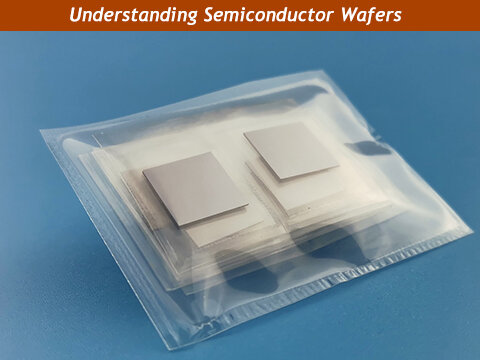 +86-731-89578196
+86-731-89578196
 [email protected]
[email protected]
- Home
- Our Company
-
Products
Sputtering Targets

- Industries
- Blog
- FAQ
- Contact Us
A Comprehensive Guide to Understanding Semiconductor Wafers and Their Applications
views, Updated: 2023-06-13

Do you know what semiconductor wafers are used for?
Semiconductor wafers are the foundation of modern electronics and have a wide range of applications. They are essential in the production of microchips, which act as the brains of electronic devices. These microchips are present in almost every electronic device, including smartphones, laptops, cars, and airplanes.
In addition to microchip production, semiconductor wafers are also used to manufacture other electronic components such as sensors, which detect light, temperature, and other environmental factors in smartphones, cameras, and other devices. Furthermore, semiconductor wafers are also used in the manufacturing of solar cells, which convert sunlight into electricity. They are used in the production of LEDs for lighting and display purposes, as well as transistors, which amplify and switch electronic signals.
Types of semiconductor wafers
Semiconductor wafers come in different types and have unique properties and applications. The three most common types are silicon, germanium, and gallium arsenide.
Silicon wafers are widely used in semiconductor manufacturing, electronic components, microchips, and solar cells. They are also used to make micro-electromechanical systems (MEMS) that are present in electronic devices and sensors.
Germanium wafers are used to manufacture high-frequency transistors and other electronic components. They are utilized in infrared detectors and other optical devices.
Gallium arsenide wafers are used to make high-speed transistors and other electronic components. They are also used in solar cell manufacturing and other electronic devices that require high efficiency.
The manufacturing process of semiconductor wafers
The process of manufacturing semiconductor wafers involves a series of complex stages. Firstly, a single crystal of semiconductor material is grown using a process called crystal growth. This entails heating the material to a high temperature and then gradually cooling it down.
Secondly, the crystal is sliced into thin wafers using a diamond saw in a process called wafering. The wafers are then polished to remove any surface imperfections.
Thirdly, the wafers are doped by introducing impurities into the semiconductor material to create regions of positive and negative charge. This is done using ion implantation by bombarding the wafers with ions of the desired impurity.
Lastly, the wafers are patterned by etching the surface to create the desired pattern of electronic components through a process called photolithography, which involves using a patterned mask to selectively expose the surface of the wafer to light.
The Role of semiconductor wafers in the electronics industry
Semiconductor wafers play a crucial role in the electronics industry as they are used to make microchips, which serve as the brains of electronic devices. These microchips are utilized in almost every electronic device, ranging from smartphones to laptops, cars to airplanes.
They are also significant in producing sensors that detect light, temperature, and other environmental factors in electronic devices such as smartphones and cameras. They are also used in manufacturing solar cells that convert sunlight into electricity and LEDs for lighting applications and displays.
The electronics industry is constantly evolving, and semiconductor wafer technology is leading this evolution by developing new materials and manufacturing processes to create smaller and more efficient electronic components.
Applications of semiconductor wafers in various industries
Semiconductor wafers have multiple applications across different industries. They are widely used in the electronics industry to produce microchips, sensors, and other electronic components.
In the solar industry, they are utilized to create solar cells that can convert sunlight into electricity. The lighting industry also employs semiconductor wafers to manufacture LEDs for lighting applications and displays.
Moreover, semiconductor wafers play a significant role in producing transistors that amplify and switch electronic signals, particularly in the telecommunications industry where they are used to manufacture high-frequency transistors and other electronic components.
How to choose the right semiconductor wafer for your application
Selecting the appropriate semiconductor wafer for your specific application can be a challenging task. The process involves comprehending the characteristics of various semiconductor materials and the production methods utilized to manufacture them.
Additionally, it entails understanding the demands of your application and identifying the semiconductor wafer that will best suit those requirements. When making this decision, one must contemplate several factors, including the material, dopant concentration, thickness, and quality of the wafer. It is also crucial to assess the cost of the wafer and the availability of the material.
If you're uncertain about which semiconductor wafers would be the best fit for your specific requirements, we highly recommend that you get in touch with our knowledgeable sales team. They can provide you with valuable guidance and help you select the most suitable wafers for your needs. Don't hesitate to reach out to us if you have any questions or concerns. We are always here to assist you.
LATEST NEWS











